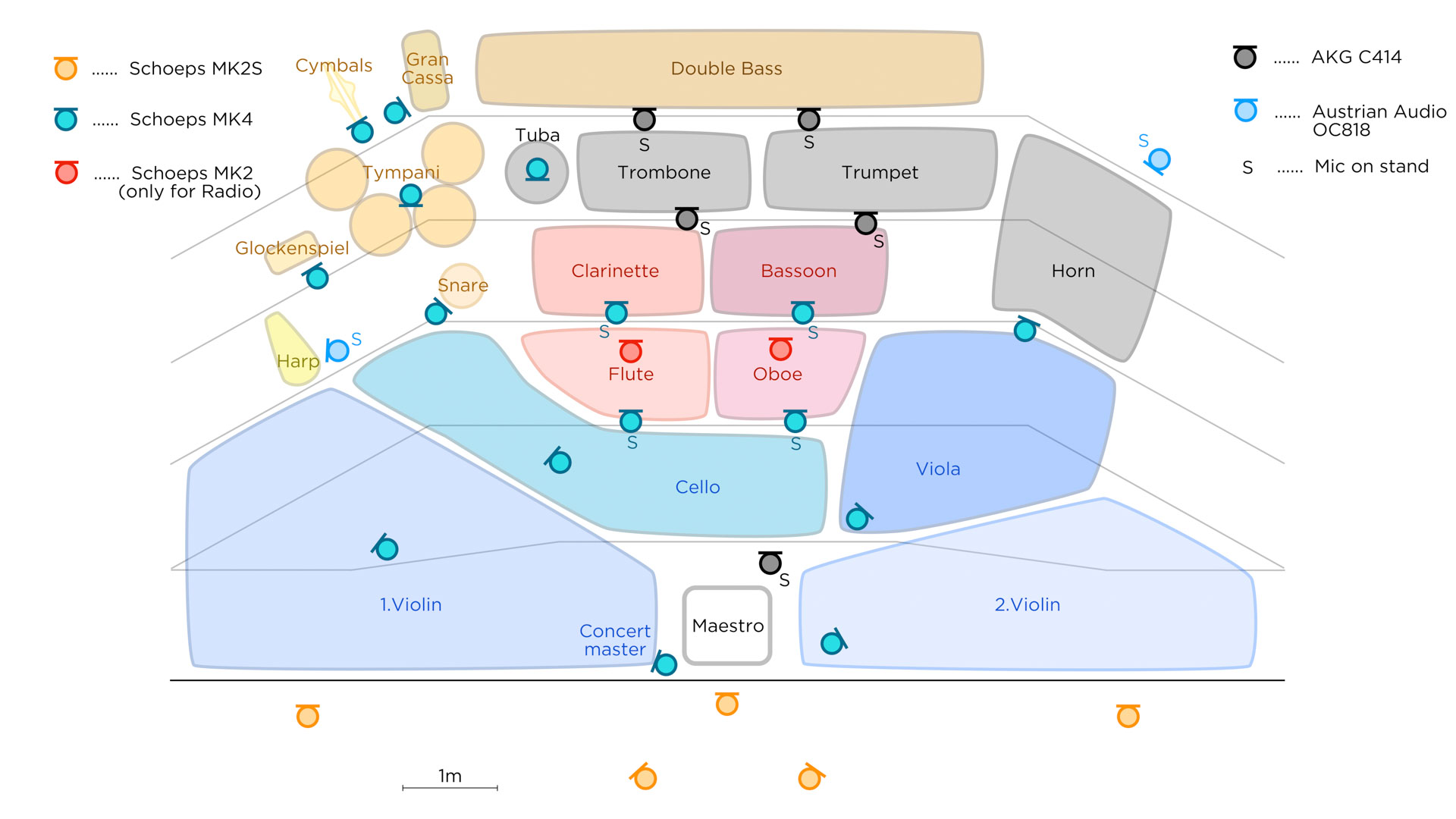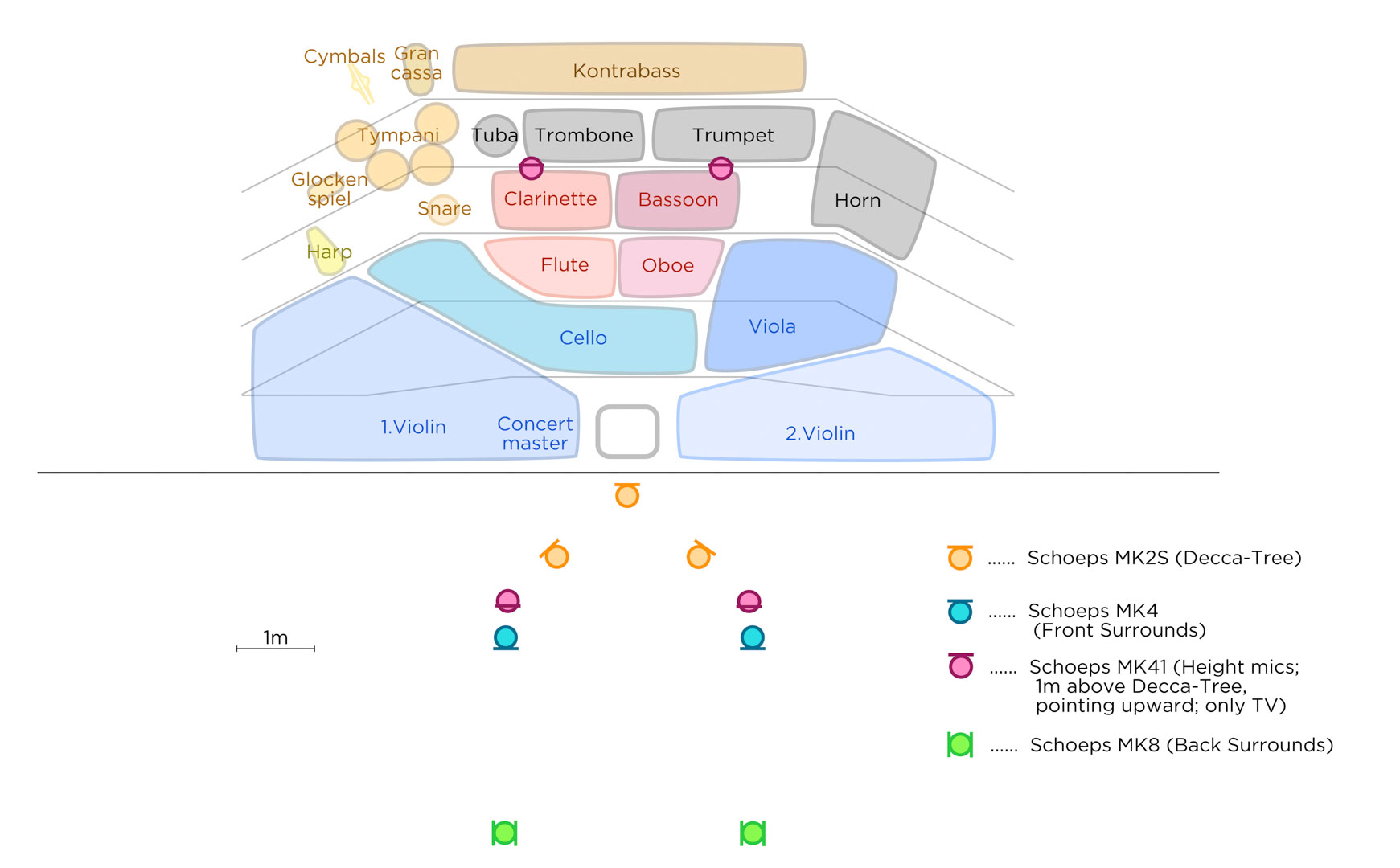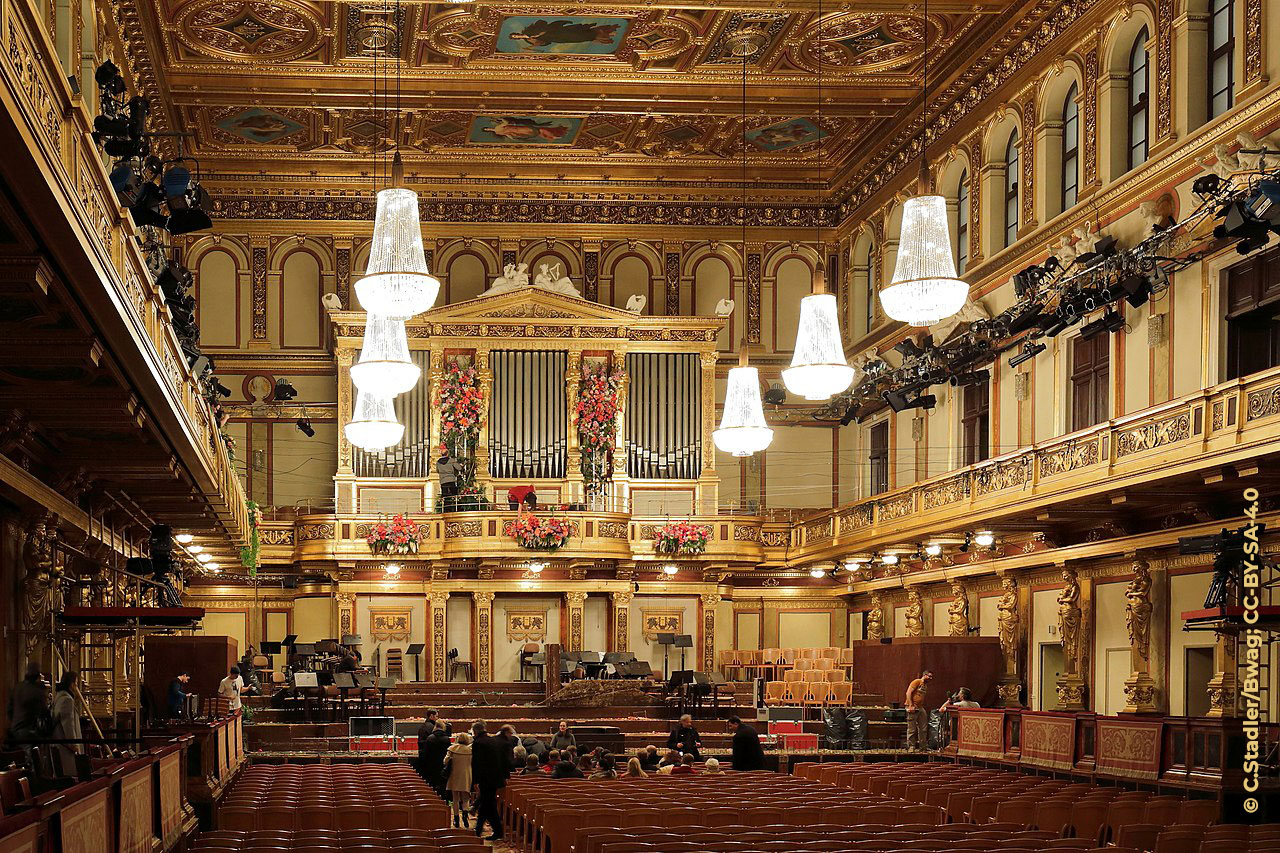
Microphone positions of the lower level of the New Year's Concert (2024)
Microphone Setup for the New Year's Concert in 2.0 Stereo, 5.0 Surround and 3D Audio
Editor: Florian Camerer, Senior Sound Engineer, ORF
The Vienna Philharmonic's New Year's Concert in the Golden Hall of the Vienna Musikverein is one of the most prestigious and most-watched classical music concerts in the world. Every year, many millions of TV viewers watch this event, which is broadcast live by the ORF and many international radio and television stations - in 2024 in 100 countries! In addition CDs, DVDs and Blu-ray discs, which are released shortly afterwards, are among the most successful titles in their field every year.
Due to its extraordinary reach, the New Year's Concert represents a worldwide reference for sound technology and especially for the microphone setup. For decades, engineers from ORF Radio have been responsible for the selection and installation of microphones together with ORF television. The sound engineers always achieve the highest level of sound quality, and at the same time make sure that the microphones are not captured at all by the many cameras, or at least in an elegant look.
For a long time, a Decca tree of three Schoeps MK 2S capsules with CMC amplifiers has been used as the main microphone arrangement, mixed with many support microphones. The spot microphones are also important because the TV directors like to film the instruments in extreme close-up, and in such a case, a spot microphone gives the necessary texture. Different types of spot microphones are used, many of which are Schoeps Colette capsules with Colette stands, as these are optimal for sound quality and optical elegance.
As the flagship of the ORF productions, the New Year's Concert will be produced in all current sound formats. In addition to the main mix in 2.0 stereo, mixing and transmission has been in 5.0 surround since 2003 and in 3D audio format 5.0.4 (Auro-3D or Dolby Atmos) since 2014. The live mix (by ORF colleague Martin Gamperl from the OB van department) focuses mainly on the 2.0 stereo signal, as it is what most consumers hear.
The Decca Tree is used for all three sound formats. The center is panned to the middle in the 2.0 mix. A modified Hamasaki square consisting of two Schoeps MK 4 cardioids at the front (which are directed diagonally backwards/downwards towards the audience in the stalls) and two figure-8 Schoeps MK 8 approx. 3 meters farther back serves to capture the room and audience atmosphere and the applause. The audience atmosphere is particularly crucial at this concert, because the audience plays a leading role in the traditional encores, which are the same every year: the audience interrupts the beginning of “An der schönen blauen Donau” ("On the Beautiful Blue Danube") (the pianissimo tremolo of the violins) with applause, then the conductor addresses the world with his New Year's wishes. In the following piece "Radetzky March" there is rhythmic clapping, whereby the conductor has been conducting the audience for many years (since Nikolaus Harnoncourt's first New Year's Concert in 2001).
All microphones for the height channels for the 3D audio mix are upward-firing Schoeps MK 41 supercardioids or Schoeps MK 4 cardioids. The positions of the microphones for the height channels have evolved over the years. In the beginning, the front height microphones were positioned directly above the woodwinds, also because at the first concert, which was recorded in 3D audio, the Vienna Boys' Choir sang in the organ loft, which led to this narrower placement. If there is no choir (the usual case), the front height microphones are positioned above the Decca tree. The distance to the Decca tree is not large (about 1 meter), as it is known that the vertical decorrelation is not as decisive as the horizontal. And then there's the practical aspect – most microphones are hung with steel wires, which limits the choice of positioning a bit.
The rear treble microphones are located roughly halfway between the four microphones in Hamasaki Square.
The treble channels are not used in the 2.0 and 5.0 mixes, but (like all other signals) are recorded individually. They are then used in post-production (which has been supervised by the author for 25 years) in the creation of the 9-channel master.

Microphone positions of the height level at the New Year's Concert (2024)
The release of the recordings must take place very soon after the end of the concert because the marketing needs to begin immediately. The first finished master is always the CD version. This has been done completely separately for many years by the company Teldex. Immediately after the last note of the concert, the engineers begin to work on the recording. On the same day in the evening or the next day in the morning, the quality control with the conductor already takes place - quite amazing! Video and sound editing for DVD and Blu-ray will be created by ORF between January 2nd and 5th, then different versions will be generated, e.g. for a repeat of the concert on ORF on January 6th, for the production company of the Vienna Philharmonic, for the "House of Music" in Vienna, etc. When the 5-channel files are ready, the AURO 3D mastering is started (usually on the evening of January 4th). EQing the treble channels is important here, e.g. a small boost to the bass and lowering the mids to get rid of some nasal-sounding frequencies if needed. This takes place in an ORF audio post-pro studio equipped with 9-channel monitoring. There is no LFE signal in the mix, as there has never been a volcanic eruption during the New Year's Concert, so there is no need to use the extra headroom of the LFE.


